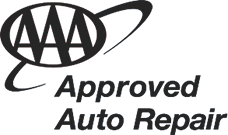Radiators
- Radiator Engine Repair – Service – Maintenance
- Tune-Ups
- Emission Test Tune-Ups
- Diagnostics
- 4 Yr / 48k Warranty
- ASE Certified Technicians
- AAA Recommended
Need your radiator (engine cooling) fixed? Find out why Nashville, TN trusts us for their car’s radiator needs. We pride ourselves on serving the community and providing quality repairs and service. Call and speak with us about your radiator repair needs today!
Why does my car need an engine coolant flush?
A cooling system flush is modern-day lingo for removing rust, dirt, sludge and dirty coolant from your radiator, water hoses, water pump and the engine’s cooling passages.
Engine coolant is a 50-50 mix of antifreeze and water, and yes, flushing the cooling system is an important part of your car’s preventive maintenance schedule. Why? Because coolant keep your engines from overheating in Nashville, TN—which keeps you from sitting by the side of the tollway waiting for a tow truck.
But it is not the same as a radiator drain & fill, or rather, merely draining the radiator will only remove a portion of the dirty fluid. A flush is needed to do the job properly.
What does engine coolant do?
Engine coolant flows through your radiator, water pump, water hoses and through internal engine passages to keep engines from operating at the proper temperature. If the coolant level becomes too low or too dirty and contaminated from age and miles driven, it can lead to an overheated engine. And when today’s engines overheat, it can mean a literal meltdown and extremely expensive repairs.
What is “clean” engine coolant?
Coolant that is still doing its job to protect your engine can be any variety of colors from green to red to orange, but the key is that it will be translucent. When it’s past its prime, it will become brownish and less clear. If your engine’s coolant is in really bad shape, it will be a sludgy brown.
If coolant for the engine is left to deteriorate, it can take its toll on your vehicle’s cooling system. Common signs of problems include:
- A low engine coolant warning light
- The engine temperature gauge going to the red zone
- Low coolant levels
- Leaking engine coolant
- Steam from under the hood
- Cool or cold air coming from your heating vents (instead of hot air)
When should I flush my engine’s coolant?
Every carmaker recommends a different schedule for flushing the coolant. While we advise using your owner’s manual as a starting point, it’s perhaps more important to regularly look at the condition of the coolant. At Gages Lake, we can do that for you, and we can use test strips to ensure the coolant is still able to protect your engine and other cooling system parts. We’ll also thoroughly check the system’s other components, such as the drive belts, cooling fan, radiator, radiator hoses, water pump and even the radiator cap.




